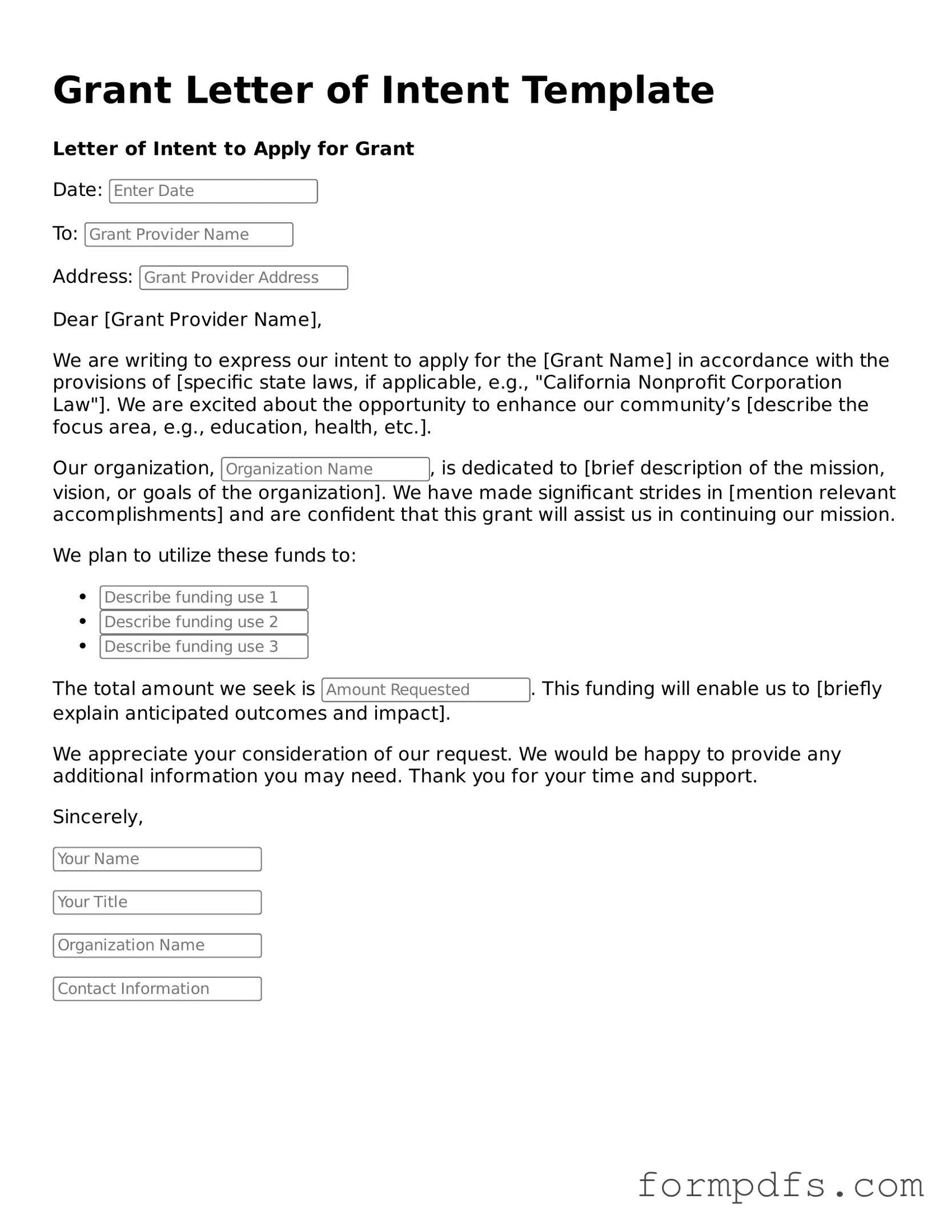What is a Grant Letter of Intent?
A Grant Letter of Intent (LOI) is a document that outlines your intention to apply for a grant. It provides a brief overview of your project, including its goals and how it aligns with the grantor's mission. The LOI helps grantors assess whether your project fits their funding priorities before you submit a full application.
Why is a Grant Letter of Intent important?
The LOI serves as an initial communication between you and the grantor. It allows you to gauge interest from the funding organization and can save you time and effort. If the grantor is not interested in your project, you can focus your resources elsewhere.
What should be included in a Grant Letter of Intent?
Your LOI should include key details about your project. Start with a concise summary of your organization. Then, describe the project’s purpose, target audience, and expected outcomes. It’s also helpful to mention the amount of funding you are seeking and how it will be used. Keep it clear and to the point.
How long should a Grant Letter of Intent be?
Typically, a Grant Letter of Intent should be one to two pages long. It should be long enough to cover the essential points but concise enough to maintain the reader's attention. Aim for clarity and brevity.
Is there a specific format for a Grant Letter of Intent?
While there is no universal format, it’s important to follow any specific guidelines provided by the grantor. Generally, use a standard business letter format. Include your contact information, the date, and the grantor’s details at the top. Use clear headings and bullet points to enhance readability.
When should I submit my Grant Letter of Intent?
Check the grantor’s website for submission deadlines. Many organizations have specific timelines for LOIs, often several weeks or months before the full application is due. Submitting your LOI early can give you valuable feedback and time to make necessary adjustments.
What happens after I submit my Grant Letter of Intent?
After submission, the grantor will review your LOI. They may reach out for additional information or clarification. If they are interested, they will invite you to submit a full grant application. If not, you will typically receive a notification that your LOI was not selected for further consideration.
